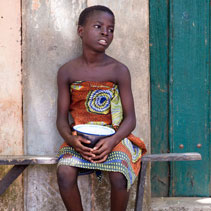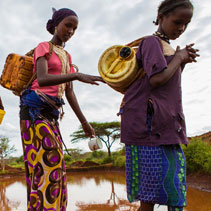Vector-borne diseases account for 17% of the estimated global burden of all infectious diseases. Their impact is most profound in Africa, particularly within communities that have little or no financial resources, and who live in fragile environments such as dryland ecologies. In addition, children and women are often more vulnerable to these infections. In short, vector-borne diseases cause the most damage in populations that are least equipped to handle them.
Malaria
The most deadly vector-borne disease, malaria, kills over 1.2 million people annually, most of them children in Africa under the age of five. In fact, a child dies every minute from malaria in Africa despite the fact that child malaria mortality rates on the continent have been reduced by 58% since 2000. The disease burden is heavily concentrated in sub-Saharan Africa where an estimated 90% of global annual malaria deaths occur.
Schistosomiasis
In 2010, approximately 238 million people were infected with schistosomiasis (bilharzia), 85% of whom live in Africa. Considered a neglected tropical disease of poverty, schistosomiasis is one of the most widespread parasitic diseases in various regions of sub-Saharan Africa. Approximately 120 million people in sub-Saharan Africa have symptoms of the disease.
Human African trypanosomiasis
Usually fatal when untreated, African trypanosomiasis (sleeping sickness) occurs in 36 sub-Saharan Africa countries where the tsetse fly vector is found. Due to improved control the number of new cases reported in 2009 dropped below 10,000 for the first time in 50 years, a trend that continued, with 6,314 cases recorded in 2013. Still, African trypanosomiasis is very complex to diagnose and treat, and exerts most of its impact in poor and remote populations in rural Africa.
Rift Valley fever
Outbreaks have been reported in various Sub-Saharan and North African countries including in Kenya, Somalia and Tanzania. In September 2000, cases were confirmed in Saudi Arabia and Yemen, the first beyond African borders. The virus responsible primarily affects animals, but can also be transmitted to humans. Most human cases of RVF are quite mild, but a small percentage develop a much more severe form involving eye disease, meningoencephalitis or haemorrhagic fever.
Future impacts
Even without the effect of climate change, vector-borne diseases have been known to have a major impact in Africa. This is likely to increase. Poorly designed irrigation and water systems, inadequate housing, poor waste disposal and water storage, deforestation and loss of biodiversity all may be contributing factors to the most common VBDs, including malaria, dengue and leishmaniasis.


